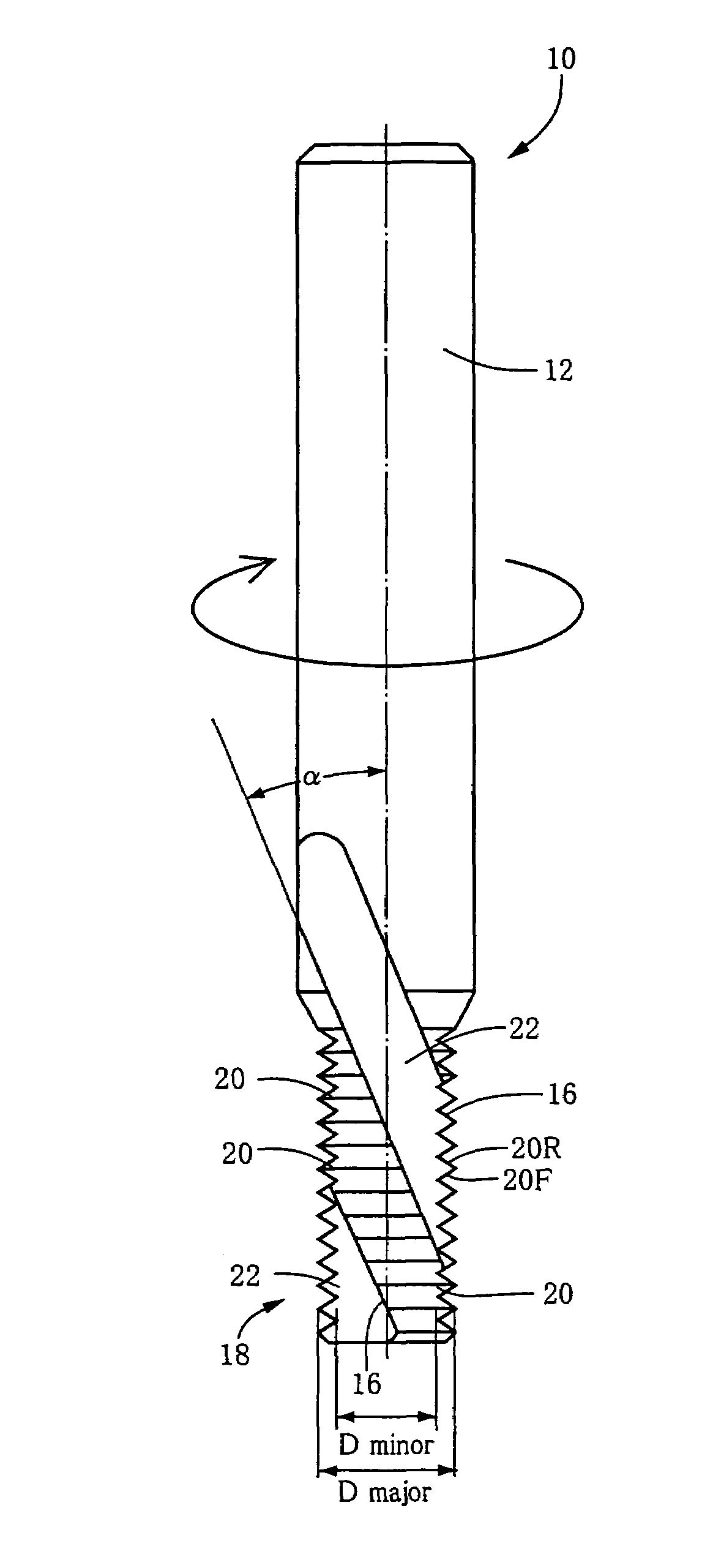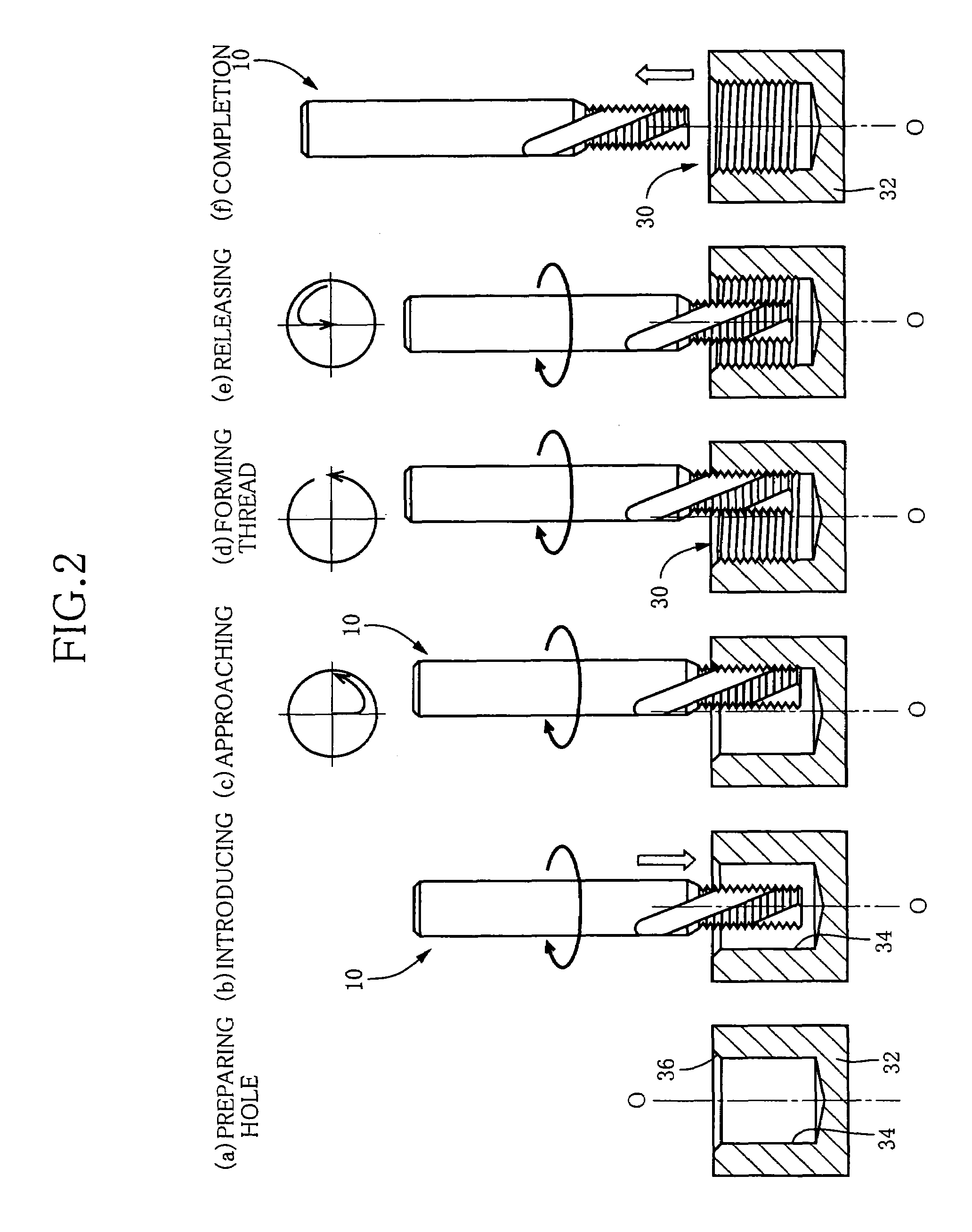Thread mill having flute twisting in direction opposite to rotating direction
a thread mill and flute technology, applied in the field of thread mills, can solve the problems of preventing the engagement of the internal thread with the external thread, affecting the performance of the internal thread, etc., and achieve the effect of reducing burrs
- Summary
- Abstract
- Description
- Claims
- Application Information
AI Technical Summary
Benefits of technology
Problems solved by technology
Method used
Image
Examples
Embodiment Construction
[0042]Referring first to FIG. 1, there will be described a thread mill 10 that is constructed according to an embodiment of the invention. The thread mill 10 includes: a cylindrical shank 12 that is to be attached through a suitable holder to a main spindle of a machine tool such as a machining center; and a cylindrical main body in the form of a fluted main body 18 that is coaxial and formed integrally with the shank 12. The fluted main body 18 has a multiplicity of annular protrusions 20 formed on its outer circumferential surface and arranged in axial direction of the main body 18 at a pitch between each adjacent pair of the annular protrusions 20 corresponding to a pitch of an internal thread 30 (see FIG. 2) that is to be machined by the thread mill 10. Each of the annular protrusions 20 has a profile of each ridge of the internal thread 30. Unlike a helical protrusion provided in a tap, each annular protrusion 20 of the thread mill 10 extends in a circumferential direction of t...
PUM
| Property | Measurement | Unit |
|---|---|---|
| helix angle | aaaaa | aaaaa |
| helix angle | aaaaa | aaaaa |
| diameter | aaaaa | aaaaa |
Abstract
Description
Claims
Application Information
 Login to View More
Login to View More - R&D
- Intellectual Property
- Life Sciences
- Materials
- Tech Scout
- Unparalleled Data Quality
- Higher Quality Content
- 60% Fewer Hallucinations
Browse by: Latest US Patents, China's latest patents, Technical Efficacy Thesaurus, Application Domain, Technology Topic, Popular Technical Reports.
© 2025 PatSnap. All rights reserved.Legal|Privacy policy|Modern Slavery Act Transparency Statement|Sitemap|About US| Contact US: help@patsnap.com



